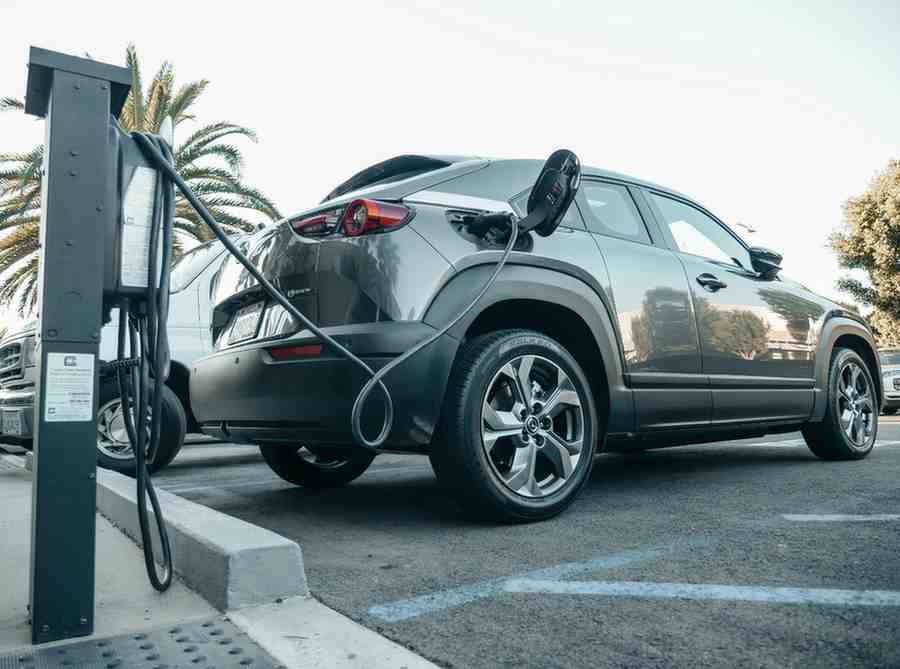Electric vehicles are rewriting how we think about driving, maintenance, and yes – insurance. But with new technology comes confusion, and I’ve noticed plenty of myths floating around about EV insurance. As someone who’s spent years in this industry, I can tell you straight: most of what people believe about EV coverage is half true at best. This guide will break down the most common misconceptions and show you the real facts behind them. Whether you already drive an EV or are just thinking about switching, understanding these details can save you money and frustration later on.

Why So Many Myths Exist Around EV Insurance
Electric vehicles are still relatively new in the insurance landscape. While EVs have been on the road for years, their numbers only recently exploded. This sudden growth left many car owners and even some insurers scrambling to keep up. Misinformation spread fast. Some drivers assumed that EV insurance must automatically cost more. Others thought their batteries were fully protected no matter what. In reality, EVs come with unique coverage needs, and not every insurer handles them the same way. If you’re thinking about buying or insuring an EV, you need to separate fact from fiction before signing any policy.
Myth #1: EV Insurance Is Always More Expensive
This one tops the list of misconceptions about EV insurance. Many people believe electric vehicles automatically cost more to insure, but that’s not the full picture. Yes, EVs can have higher repair costs in certain cases, especially if the battery or electrical systems are damaged. But insurance premiums aren’t decided by a single factor. Your driving history, claim record, location, coverage level, and even the model of your EV all play a role.
Here’s the truth: not all EVs are expensive to insure. For instance, mainstream models like the Nissan Leaf or Hyundai Kona Electric often have insurance premiums similar to gas-powered cars. What can raise the cost is the limited availability of specialized repair shops and the price of EV-specific parts. On the flip side, many insurers now offer dedicated EV policies with discounts for green vehicles or low annual mileage. You can also explore usage-based plans like Pay-Per-Mile Insurance if you don’t drive much.
The bottom line: don’t assume you’ll pay more just because it’s electric. Always compare rates, coverage options, and repair network access before deciding.
Myth #2: The Battery Is Always Covered Under Insurance
Let’s clear this up – the EV battery is not automatically covered in every situation. The “battery always covered” myth comes from misunderstanding warranty and insurance overlap. Most new EVs come with manufacturer warranties that protect the battery against defects or premature capacity loss. But once that warranty expires, the story changes.
In standard comprehensive car insurance, the battery is treated like any other vehicle component. It’s covered if it’s damaged in an accident, fire, or natural disaster. What it doesn’t cover is degradation from regular use, wear and tear, or factory defects. So if your battery loses capacity over time, insurance won’t step in – that’s a warranty issue, not a claim.
Some insurers now offer EV battery protection add-ons, which can extend coverage beyond basic accidents. But always read the fine print carefully. Not every insurer defines “battery damage” the same way, and claim approvals can depend on diagnostic reports or certified service centers. I’ve seen drivers assume their insurance would replace a degraded battery only to find out it doesn’t qualify. If you’re buying EV insurance, go through your policy terms line by line.
Myth #3: EVs Come with Zero Depreciation Coverage by Default
This is one of the more subtle myths that catches even experienced car owners off guard. The idea that EVs automatically get zero depreciation coverage sounds nice – but it’s not true. Zero depreciation (or “bumper-to-bumper”) is an add-on, not a standard inclusion.
A zero depreciation add-on ensures that when you file a claim, the insurer reimburses the full cost of replaced parts without factoring in depreciation. For EVs, this can make a big difference since replacement parts like battery casings or sensors are expensive. However, this benefit isn’t automatic. You’ll need to specifically choose it when buying or renewing your policy, and it often increases your premium slightly.
Is it worth it? For newer EVs, absolutely. Since parts can be pricier and repairs specialized, avoiding depreciation deductions gives you better claim value. Older EV owners, though, might skip it if the car’s value has already dropped significantly.
If you’re curious about how depreciation plays into broader premium trends, you can also check out how inflation affects car insurance premiums.
Myth #4: Roadside Assistance Comes Standard with Every EV
Another popular misconception is that roadside assistance is automatically included in all EV insurance plans. While it’s true that many insurers now promote “EV-friendly” services, roadside assistance is still usually an optional add-on.
EVs have unique roadside risks. You might run out of charge in a remote area, need emergency towing to a charging station, or face issues with the onboard charger. Traditional towing services aren’t always equipped to handle EVs safely, which is why specialized EV roadside programs exist. These cover battery jump-starts, on-site charging, flat tire fixes, and towing to certified service centers.
However, you have to request and pay for this coverage separately. It’s not built into standard plans. Before you assume you’re covered, double-check your policy details. Roadside assistance can be a small cost compared to the peace of mind it brings – especially if you travel long distances or live far from charging stations.
Myth #5: EV Battery Claims Are Always Easy and Approved
If you ever need to file an EV battery claim, here’s the hard truth: it’s rarely simple. EV batteries are among the most expensive components in the car, often representing up to 40% of the total value. Because of this, insurers scrutinize every battery-related claim closely.
Common EV battery claim myths suggest that all you need to do is report a problem and get a replacement approved. In reality, the process involves diagnostics, inspection reports, and sometimes lab testing to determine the cause of failure. Insurers want to verify whether the damage came from an insurable event like a collision or something excluded like gradual degradation.
If your claim gets rejected, don’t panic. Review the exact reason in the insurer’s report and see if there’s room for clarification. A trusted EV service center can help validate your case. And for future protection, consider insurers known for EV expertise instead of generic car insurance providers.
Myth #6: EV and ICE Insurance Work Exactly the Same Way
EVs and internal combustion engine (ICE) vehicles share basic insurance categories – third-party liability, comprehensive, add-ons – but the similarities stop there. The difference between ICE and EV insurance lies in what’s being protected and how risks are evaluated.
EVs have fewer moving parts, meaning fewer mechanical breakdowns, but their specialized systems require different claim handling. For instance:
- EV batteries need certified assessments after any impact.
- Water damage or thermal events can lead to total loss quicker than with fuel engines.
- Replacement parts for EVs might take longer to source.
These differences affect claim timelines, premiums, and even policy design. Some insurers now offer EV-specific insurance packages with dedicated towing, charging assistance, and protection for onboard electronics. ICE policies often lack those clauses.
If you want to dive deeper into what makes EV coverage unique, I recommend reading Insurance for Electric Vehicles Guide.

Reading the Fine Print: Why Details Matter More Than Ever
This part is where most EV owners slip up. They skim through policy wording assuming it’s all standard, then get shocked when a claim doesn’t go as expected. EV insurance policies can differ drastically, especially regarding battery coverage, roadside assistance, or depreciation clauses.
Here’s what to watch for when reviewing your policy:
- Battery protection terms: Are they accident-only or include electrical failures?
- Charging equipment: Is your home charger covered for fire or surge damage?
- Repair network: Does your insurer approve EV-certified workshops only?
- Replacement parts: Are non-OEM components allowed?
Reading the fine print might sound tedious, but it’s how you protect yourself. You don’t want to find out mid-claim that your “comprehensive” plan excludes the most expensive part of your car.
Choosing the Right EV Insurance Policy
When selecting an EV insurance plan, don’t just chase the lowest premium. Evaluate the insurer’s track record with EV claims, the accessibility of service centers, and the transparency of their terms. Look for:
- Dedicated EV coverage: Some insurers now offer policies built specifically for electric cars.
- Zero depreciation add-on: Especially for new EVs.
- Roadside assistance: With EV-specific towing and on-site charging.
- Battery cover extension: To safeguard against expensive replacements.
- Repair network support: Ensure they have EV-trained technicians.
You can compare plans easily online, but also consider speaking directly with your insurer about EV-specific conditions. A 10-minute conversation can uncover exclusions not visible in digital quotes.
If you’re exploring temporary solutions, such as insuring a new EV for a week or while testing ownership costs, check out my guide on one-week car insurance.
Real-World Example: When Myths Collide with Claims
Let me give you a real scenario. A client once owned a mid-range EV that suffered water damage after heavy rain. They assumed their comprehensive insurance would replace the battery automatically. The insurer, however, rejected the claim because the water had seeped in due to poor garage drainage – not a direct flood or accident. That’s when the myth met reality. The client hadn’t read the environmental exclusions section.
Had they opted for an EV battery protection add-on, the situation might have been different. This is why I always emphasize reading the policy word-for-word, especially for electric vehicles where small details can lead to big claim differences.
The Future of EV Insurance
EV insurance is evolving fast. As the technology matures and repair networks expand, premiums will likely stabilize or even decrease. More insurers are starting to tailor products specifically for electric vehicles, focusing on real driving data, charging behavior, and predictive analytics to assess risk more accurately.
Governments are also supporting this shift. For example, in some countries, EV owners receive tax benefits or reduced insurance duties to encourage adoption. If you’re an early adopter, you’re part of that evolution. Expect your next renewal to offer better customization than your last.
For a broader view of how changing markets influence car insurance, you might find this piece on inflation’s impact helpful.
Final Thoughts: Know the Facts Before You Pay the Premium
Most EV insurance myths come from assumptions carried over from traditional cars. Electric vehicles are a different world – different components, risks, and repair ecosystems. The best thing you can do is stay informed, compare intelligently, and read your policy carefully.
Don’t fall for quick promises like “full battery coverage” or “zero depreciation guaranteed.” Ask for the proof in writing. Insurers are adapting fast, but understanding what you’re signing up for is still your strongest protection.
As EVs become mainstream, the insurance landscape will keep changing. Staying updated is key. If you’re planning to switch from a traditional car, learn more about how EV insurance compares to ICE coverage or browse guides like Car Insurance for Older Cars to understand how age and vehicle type affect your options.
And remember: good insurance isn’t just about paying premiums – it’s about peace of mind when things go wrong. That’s what I help my readers find every day.
External references:



